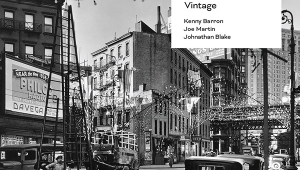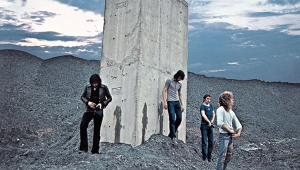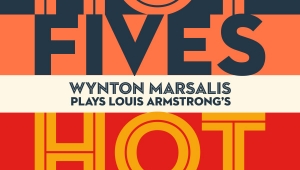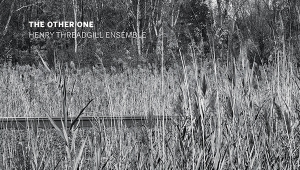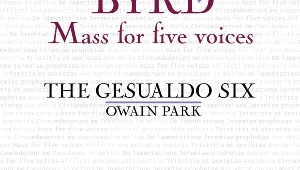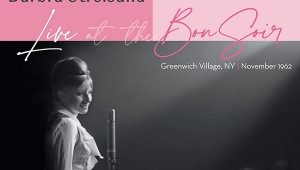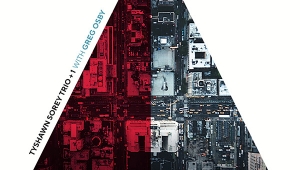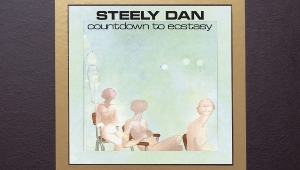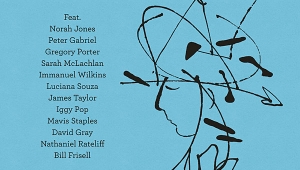| Columns Retired Columns & Blogs |
Recording of October 2011: The Time of the Sun
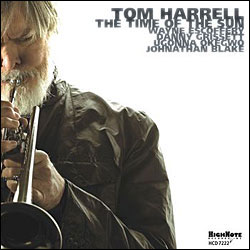 Tom Harrell: The Time of the Sun
Tom Harrell: The Time of the SunTom Harrell, trumpet, flugelhorn; Wayne Escoffery, tenor saxophone; Danny Grissett, piano, Fender Rhodes; Ugonna Okegwo, bass; Johnathan Blake, drums
High Note HCD7222 (CD). 2011. Tom Harrell, Wayne Escoffery, Angela Harrell, prods.; Joe Fields, exec. prod.; Mike Marciano, eng. AAD? TT: 62:12
Performance ****½
Sonics ****½
Trumpeters use their horns to search for truth. At least that's the folk tale. Somehow, that pure, ringing tone that most strive for at some point in their career—think Louis Armstrong, Clifford Brown, Miles Davis—suggests a quest for deeper knowledge, something closer to the heart. In effect, trumpeters play a knife—a blade that can cut through nerve, bone, and sinew to that heart; to realizations, we'd like to think, that force them to be honest.
Those who bemoan the absence in today's jazz of a truth teller such as John Coltrane or Miles Davis need to remember the playing and writing of Tom Harrell, which are every bit as deft and insightful as those of the titans of the past. From his sharp, lyrical, cool-toned playing on trumpet and flugelhorn, to the forceful, focused, accessible ideas in his writing, to his ability to lead one of the more long-lived and muscular post-bop quintets in jazz today, Harrell is one of the music's biggest stars.
On The Time of the Sun, his 27th album as a leader, Harrell, now 65, shows again what a master he is, not only of his horns but of pen and paper. His current writing continues to incorporate more and more rhythmic vitality, and though this album of original compositions does include "River Samba," which extends Harrell's love of that form, he's now moving from the Latin-tinged feel of some of his RCA/BMG recordings of the late 1990s to a much funkier attitude and tone. This reaches a climax on track 3, "Ridin'," in which drummer Johnathan Blake and bassist Ugonna Okegwo lock in the rhythm, and pianist Danny Grissett lashes out fast, funky interjections on Fender Rhodes, before Harrell steps up to deliberately evoke the glorious ghost of electric-era Miles. It's the most transcendent moment on this record, and one of the most groove-heavy tracks he's ever recorded.
In another choppy groover, "The Open Door," Blake makes a convincing case for his ability to thrust and drive, while Wayne Escoffery's distinct, full tone and assertive attack provide a very different flavor and effective instrumental counterweight to the lighter, more cerebral Harrell. The tenor-sax player lays out a ferocious solo here, before the leader is simply spectacular in his statements, running up and down the scales. Though less rhythmically insistent, "Cactus" is also a smooth, pulsating workout; Escoffery has fun with the first solo, before Harrell moves in to intersperse long-lined passages with sparkling flurries of notes.
Afflicted with a form of schizophrenia that he has controlled with drugs for many years, Harrell—who served apprenticeships in the bands of Woody Herman, Horace Silver, and Phil Woods, to name just a few of his associations over the years—has, like all truly great horn players, an unmistakable, confident tone. That tone is lush, lyrical, and inviting as it floats through "Dream Text," a tune that changes midway through into almost a pop melody, with Grissett's twinkling Rhodes redolent of the approach of Bob James. In his liner note, Harrell says that he has "a storehouse inside me of beautiful moments," and he reveals a few of them here as he pays tribute to his old mentor Silver in "Modern Life," which blends several bright Silver-like themes played in unison by Harrell and Escoffery, and includes a gorgeous, liquid solo from Grissett on acoustic piano.
Recorded at Brooklyn's Systems Two recording studio, The Time of the Sun has a three-dimensional sound that is alive with rich dynamics and a nice balance between the instruments. It opens with sounds, reminiscent of a shimmery synthesizer, that were generated by the sun's magnetic field. These were recorded at the University of Sheffield and at Stanford University (from which Harrell graduated in 1967 with a degree in music composition), and downloaded from iTunes by Angela Harrell, the trumpeter's wife. What sounds on paper like a gimmick actually works as an opener to one of Harrell's finest albums as a leader—so far. In his liner note, he explains the sun's whispers in ways that connect directly to his worldview of life and music:
"I'm interested in the way a certain number of sequences pervade the universe as well as music—which is part of the universe. For example, the earth takes 12 months in its orbit to go around the sun, which relates to the 12 notes of the chromatic scale—you could think of the sun as a tonic and the planets as notes in the scale. But sometimes I write music without a tonal center, too. You can also think of the 12 notes as being all equal divisions of the octave. So in a sense, the music has a political implication, too. It shows how people can be free and still retain structure."—Robert Baird
- Log in or register to post comments


